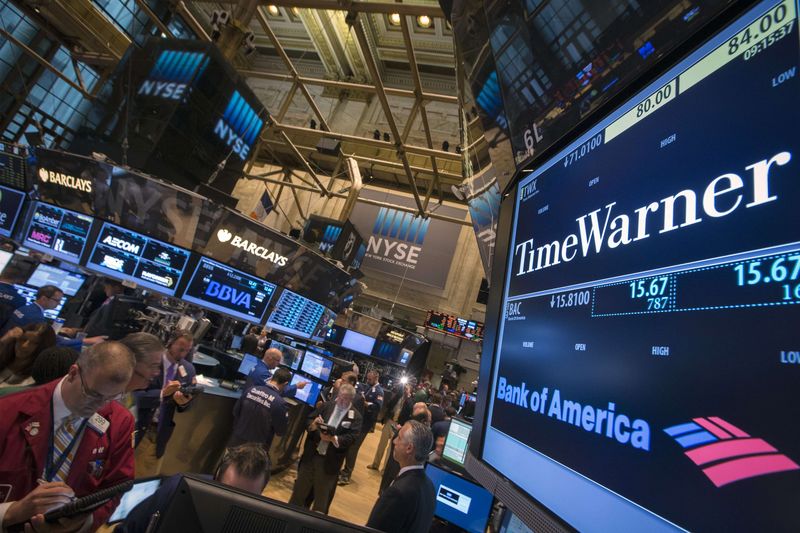
Tesla (NASDAQ:TSLA) is in the spotlight Monday after the electric vehicle manufacturer cut prices in a number of its major overseas markets, including China and Germany, as it battles falling sales and an intensifying price war.
“Tesla prices must change frequently in order to match production with demand,” CEO Elon Musk posted on X on Sunday.
The EV giant cut the starting price of the Model 3 in China by the equivalent of just under $2,000, its official website showed on Sunday, while there were also price cuts in Germany, as well as many other countries in Europe, the Middle East and Africa.
U.S. prices of the Model Y, Model X and Model S vehicles were cut by $2,000 on Friday.
The price cuts come after Tesla reported earlier this month that its global vehicle deliveries fell in the first quarter for the first time in nearly four years, prompting the company to cut its workforce by over 10% last week, eliminating at least 14,000 jobs.
That said, Bloomberg reported earlier Monday that Muck had pushed for a 20% headcount reduction, suggesting that the actual number of reductions could be more than 20,000 roles.
Tesla is set to report its first quarter earnings on Tuesday, and is expected to log a sharp decline in its operating profit as well as its first revenue drop in four years.
Tesla’s stock is now down over 40% so far this year.
U.S. stock futures edged higher Monday, stabilizing at the start of a new week following a sharp selloff from the tech sector, in particular.
By 04:25 ET (08:25 GMT), the Dow futures contract was 120 points, or 0.3%, higher, S&P 500 futures climbed 17 points, or 0.4%, and Nasdaq 100 futures rose by 85 points, or 0.5%.
The S&P 500 and the Nasdaq Composite indices closed sharply lower last week, dropping just over 3% and 5.5% respectively, as sticky inflation readings have reduced the likelihood of the Federal Reserve cutting interest rates several times in 2024.
The Dow Jones Industrial Average outperformed, helped by its relatively minor tech exposure.
Given the worries over inflation, the release on Friday of the monthly personal consumption expenditures price index, the Federal Reserve’s favored inflation gauge, will be in the spotlight.
The tech sector will also remain in focus, as quarterly earnings from this important sector are scheduled to start emerging this week [see below].
The focus of the quarterly earnings season swaps this week from the banking sector to big tech – results that will be an important test for the year’s U.S. stock rally, which has flagged of late as expectations for interest cuts fade.
Four of the so-called Magnificent Seven group of tech giants will report this week – electric vehicle maker Tesla on Tuesday after the market closes, Facebook-parent Meta (NASDAQ:META) on Wednesday, followed by Microsoft (NASDAQ:MSFT) and Google-parent Alphabet (NASDAQ:GOOGL) on Thursday.
Of the other megacaps, Apple (NASDAQ:AAPL) and Amazon (NASDAQ:AMZN) are set to report the following week, while Nvidia (NASDAQ:NVDA) reports on May 22.
While first-quarter reporting season is still in its early stages, expectations have dimmed. Analysts now see aggregate S&P 500 earnings growth of 2.9% year-on-year, down from the 5.1% estimate on April 1, according to LSEG data cited by Reuters.
A significant portion of that growth is likely to come from the Big tech powerhouses, with UBS forecasting earlier this month that six of the seven, excluding Tesla, are expected to post collective earnings growth of 42.1% in the first quarter.
Bitcoin, the world’s largest cryptocurrency by market capitalization, edged higher Monday, but significant gains in the wake of its widely-anticipated halving event have been hard to find.
By 08:25 ET, Bitcoin traded 1.6% higher at $66.237.0, following the 4th Bitcoin halving over the weekend, which saw the rewards for mining new Bitcoin cut in half.
Previous halvings occurred in 2012, 2016 and 2020, and were followed by significant price rallies as investors factored in a reduced rate of new Bitcoin generation.
However, Bitcoin only gained marginally, even as risk appetite improved amid waning concerns over an Iran-Israel war, and trades significantly below the all-time high of $73,750, hit in March.
Strength in the dollar and the prospect of higher-for-longer U.S. interest rates limited any major upside in crypto prices.
Crude prices fell sharply Friday, extending the prior week’s losses amid growing hopes that the Iran-Israel conflict will not escalate further, reducing the chances of major disruptions to supplies from this oil-rich region.
By 04:25 ET, the U.S. crude futures traded 1.6% lower at $80.88 a barrel, while the Brent contract dropped 1.5% to $86.00 per barrel.
Both benchmarks fell around 3% last week, posting their biggest weekly loss since February, after Iran downplayed Israel’s retaliatory drone strike on its soil, indicating that an escalation of hostilities in the Middle East might be avoided.
Attention is returning to fundamental issues, amid fears that higher-for-longer U.S. interest rates and sticky inflation will dampen economic growth this year, in turn chipping away at global oil demand.
Rising U.S. crude inventories are also pressuring the market, while reports emerged on Friday that the International Monetary Fund expects OPEC+ to begin increasing oil output from July.
OPEC+ members, led by Saudi Arabia and Russia, last month agreed to extend voluntary output cuts of 2.2 million barrels per day until the end of June.
To read the full article, Click Here

